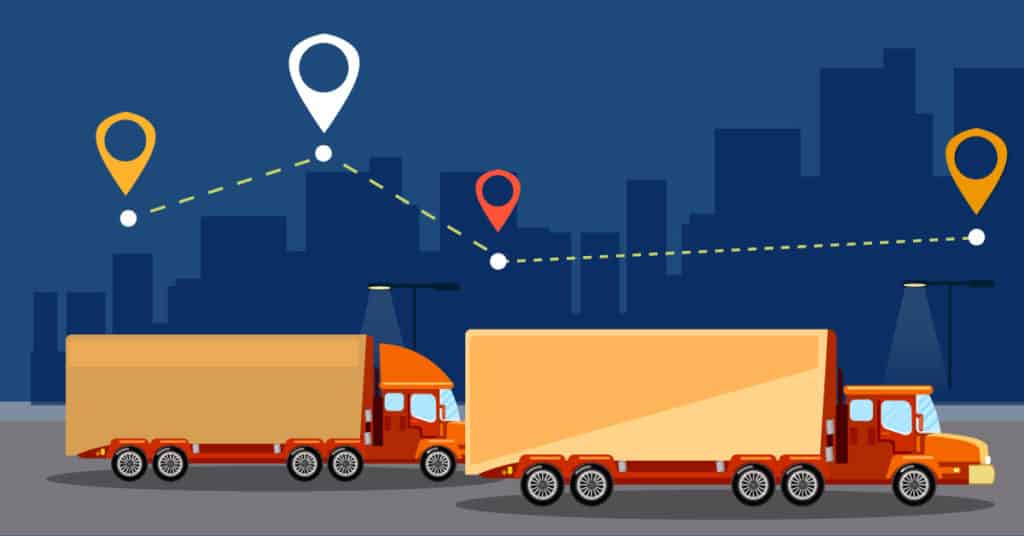With the help of technology, it is easy to solve complex issues, and organizations heavily rely on the utilization of technological solutions to increase efficiency and simplify business operations. With such digital solutions, organizations have successfully reduced the cost of operations.
In the transportation and logistics sector, the core technology adopted by a large number of organizations, it is the fleet monitoring software. The fleet monitoring software solves the basic problem faced by companies in the sector.
With the help of fleet monitoring software, it makes it possible for fleet managers to keep actively tracking the fleets on the road in real-time. With the help of the fleet monitoring software, fleet managers get an extra set of eyes and ears on the movement of the fleet. This allows fleet managers to focus on increasing efficiency in operations.
The fleet monitoring software also provides fleet managers with ample amounts of data, which helps fleet managers in taking the decisions driven by accurate data.
Contents
What is Fleet Monitoring Software?
In layman terms, fleet monitoring software is a digital solution that allows the organizations to monitor their fleets with the help of GPS technology in real-time.
However, a fleet monitoring software is not just a simple tracking software. With the help of sophisticated telematics, it provides fleet managers and organizations with accurate and ample amounts of data about their fleet operator’s behaviour, about the efficiency of the route being taken to complete the tasks, and other such helpful insights, which allows fleet managers to make changes in their operations.
The following data can be accessed with the help of fleet monitoring software:
- The total gallons of fuel used by the fleet
- The route was taken by the fleet
- The overall health of the fleet and reminders for a routine maintenance
- Idling activity
- Unauthorised use of the fleet
- Total distance covered by the fleet
- The average speed of the fleet. The software also provides details of the top speed of the fleet too.
- The total number of stops made by the fleet operators and the location of the fleet.
With the help of fleet monitoring software and telematics, fleet managers can actively track the behaviour of their fleet operators and identify any risky habits of their employees.
Fleet monitoring software ensures that a fleet operator is complying with the rules and regulations stipulated by the authorities. The most common rules are:
- Ensuring that the fleet operators are wearing seat belts at all times.
- To avoid using mobile phones while driving the fleet.
- To ensure that the fleet operator is not over-speeding
- To ensure that fleet operators don’t jump any red signals
How does Fleet Monitoring Software work?
The fleet monitoring software collects data about the fleet operators, the route, and the vehicle and compiles the data. This data is collected by hardware products, which then, transmits all the collected data with fleet managers using the cellular network.

The data is displayed on a secured software platform with the fleet managers. The display of data is personalized to meet the requirements stipulated by the organization. The data is used by the fleet managers to understand how efficiently the operations are running.
What are the various types of Fleet Monitoring Tools?
The fleet monitoring software uses various types of tools to monitor the fleet. The various tools range from GPS integrated tracking devices, telematics platforms, dispatch management systems, and dashboard cameras.
The tools integrated into the fleet monitoring system is personalized to meet the requirements of the organizations.
GPS integrated tracking devices
Global Positioning System (GPS) tracking is a digital solution which helps in tracking the position of the fleet. To capture the vehicle data, a tracking device is installed in the vehicle for the purpose of tracking.
The installed device collects the vehicle data which ranges from data related to fuel consumption, the location of the vehicle, and the working of well-connected devices.
A GPS tracker allows the fleet managers to keep a record of their fleet operator’s behaviour and track their location in real-time.
Telematics Platforms
Telematics systems gather data about the location of the fleet, the behaviour of the fleet operator, the vehicle activity, engine diagnostics, fuel consumption and more such relevant data, and the telematics platform displays the data on the software platforms to help fleet managers.
A telematics system includes a GPS technology integrated vehicle tracking device installed in the fleet that is facilitated to send, receive and store telemetry data. Telematics system enables the wireless data communication from the hardware installed in the fleet, to the software systems built to provide visualized data for fleet managers.
Dispatch Management Systems
Dispatch Tracking Systems are designed to automate routing and scheduling processes. The system is designed to provide simpler and efficient routes in completing a task. This helps the organization in increasing the efficiency of their business operations.
Dispatching Software can be customised in the scheduling of future appointments. Dispatching Software has been designed to help improve the efficiency of the organization and help in taking quicker decisions.
Dashboard Cameras
Dashboard Cameras play a pivotal role in the transportation and logistics industry. The use of dashcams in trucks has been continuously increasing over the years. It is currently a must-have gadget for an expensive truck. Dashboard cameras are essentially an accessory for private automobiles. The dashboard cameras installed in trucks start recording automatically once the truck power is on. The dash camera derives its power from the truck’s battery.
Must read: How to Share Your Android Screen with Another Android